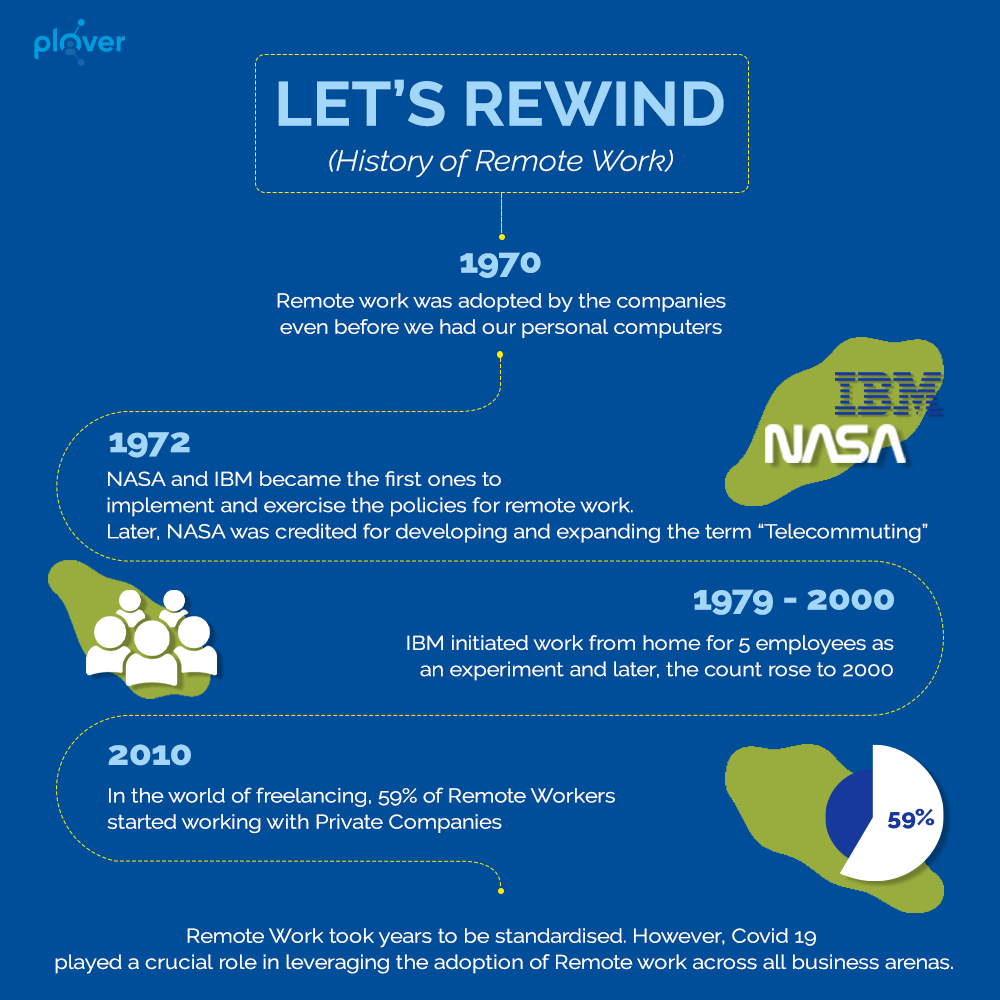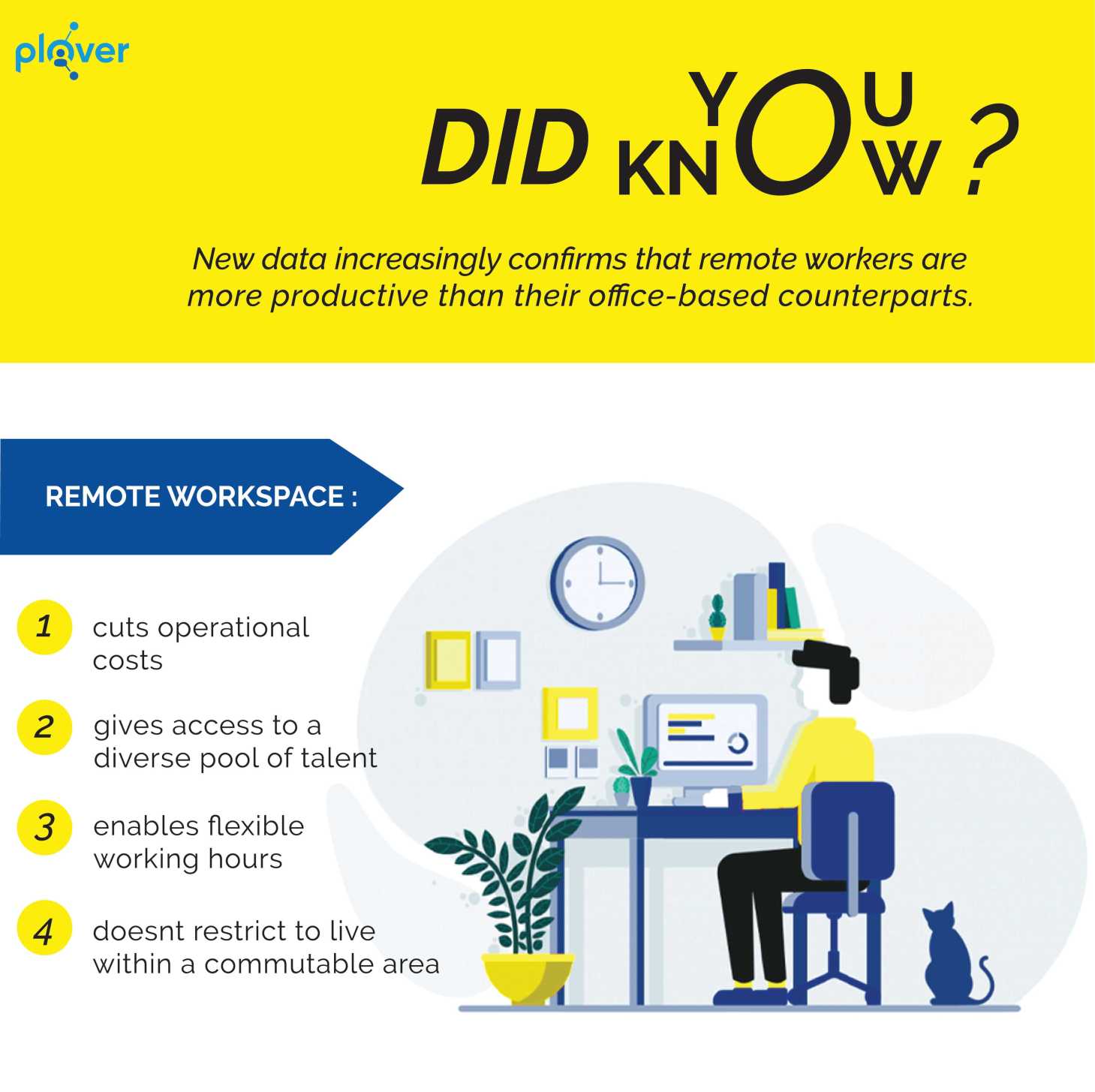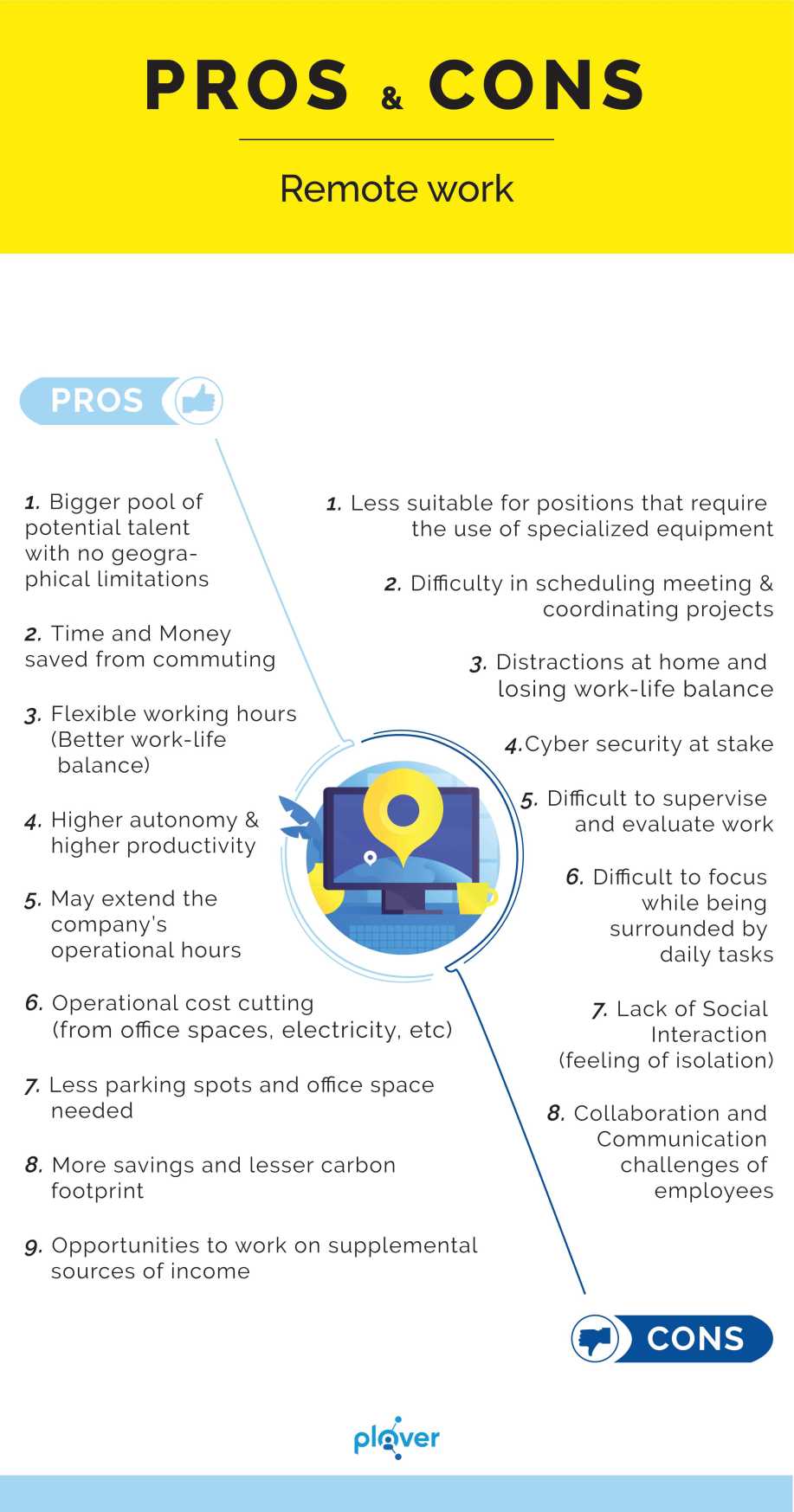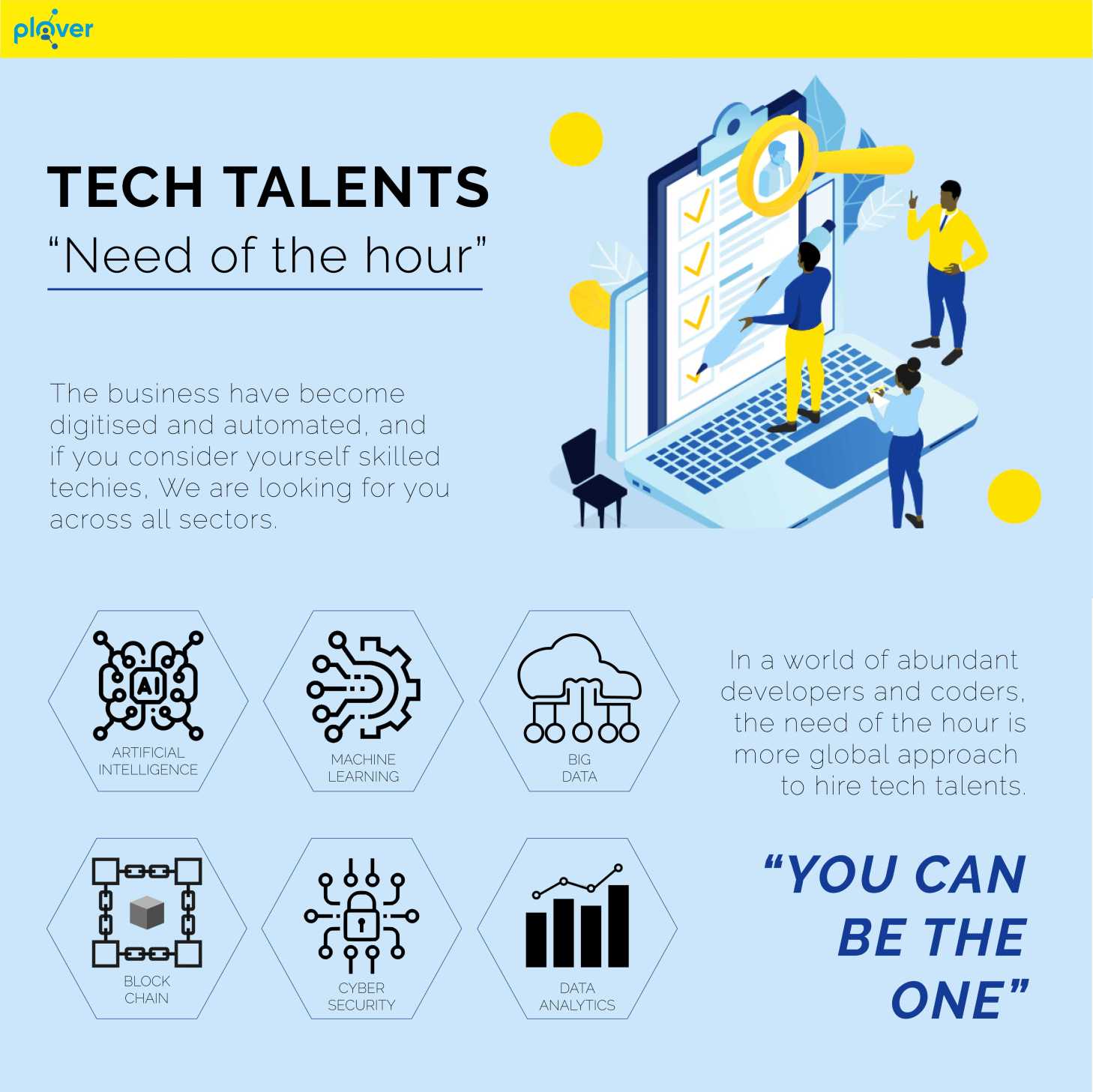
In today’s modern civilization, remote work/telecommuting/work from home and everything
between has become the new buzzwords, or rather the new normal. Remote work has gained
traction in the last year as a consequence of the Covid-19 Pandemic, but it would be a
delusion to believe that the conception of remote work is a product of recent times.
Although, the definition is different today from what it was a few hundred years ago
While the modern-day companies adopted remote work after 1999, it predates even the personal
computer. It dates back to two centuries and was induced by the first Industrial Revolution.
NASA and IBM were the first ones to implement and exercise the policies for remote work.
NASA was credited for developing and expanding the term “Telecommuting” in 1972 while IBM
was credited for initiating work from home for 5 employees as an experiment in 1979.
By 1983, the count rose to 2000. Since then, the figure rose significantly, crossing all
geographical barriers. It isn’t just the outcome that redefined work, it was the methods
that took years to be standardized and absorbed as a system of remote work.

As international trade gained popularity, remote work became a crucial factor that drove
growth and led to multiple advancements. This in return, made remote work an increasingly
necessary requirement. Those dealing with international clients needed to accommodate
various time zones and travel schedules, to ensure smooth delivery of product & service.
Regardless of the name you choose, remote work culture is now an embedded part of the
corporate world. New data increasingly confirm that remote workers are more productive than
their office-based counterparts. Hence, it is necessary to manage and track the efficiency
of the former, if this practice is to continue.
Early adopters of remote work are making bold and powerful adjustments. In a post-pandemic
world, one of the prospects is that more and more companies see an opportunity to unfold
greater results which have spurred more professions hopping aboard the remote work train.
Many are considering making it a permanent option. Such smart businesses have caught onto
the benefits of not having to house employees in expensive offices. The flexible workspace
not only cuts operational costs significantly but also allows for other very important
things, like access to a diverse pool of talent, with no restriction of living within
commuting distance of the office anymore.

Therefore, it is Clear: Remote Work is a much-needed reform that is here to stay & grow.
Everything comes with both positive and negative prospects, and so does Remote work culture. Below are some pros and cons of the same.

And since the benefits outweigh the cons, remote work shows no signs of fading away.
Now comes the challenge of how to achieve the optimum level of efficiency while working
remotely? Or how to weigh the efficiency of professionals working from home to optimize for
disruptions caused by the global pandemic?
Remote
work
and technological advancement work in tandem. The right tech stack keeps the
physical and digital worlds connected, ensuring increased collaborative discussions across
the globe, which keeps the teams visible and liable from the moment they log in to the
moment they log out.
Going fully Remote may look lucrative. Access to an enormous talent pool makes it more
appealing. However, If you want to work with the best talents in the future, you have to
think about what you offer today. Larger the candidate pool, the greater the chances of time
consumed in hiring or vetting the right candidates.
Search for Tech Talent
Tech profiles are nowadays fundamental and invincible for all types of companies, from all
kinds of sectors. They are no longer just being sought by technology-based companies, but by
many others who want to incorporate technology and digitization into their strategies to get
in line with the new demands of a purely competitive market. Skill gaps have become more
evident during the pandemic, forcing all companies, fast and slow, large or small, from
different industries to use technology for survival.
The demand for tech talent, especially those skilled in technologies like artificial
intelligence, machine learning, big data, blockchain, Internet of Things, cybersecurity, and
data analytics, is across all sectors, as businesses become digitized and automated.

It is a well-known fact that technology professionals are one of the most highly-paid
workers, and hence the consolidation of talent in a remote setup makes way for a truly
global workforce of programmers operating in many time zones to work around the clock, each
adding more functionality to the organization.
There are abundant developers, coders, testers but choosing the right one is often the most
time-consuming process. Hence, there is a greater need for a more comprehensive approach to
hiring tech talent.
Conducting preliminary filtering aptitude tests is a viable option to scrap out unwanted
profiles. Aptitude tests revolve around real-time problems of the firm seeking employees
with domain expertise. This helps in testing both the domain knowledge and the application
skills of candidates.